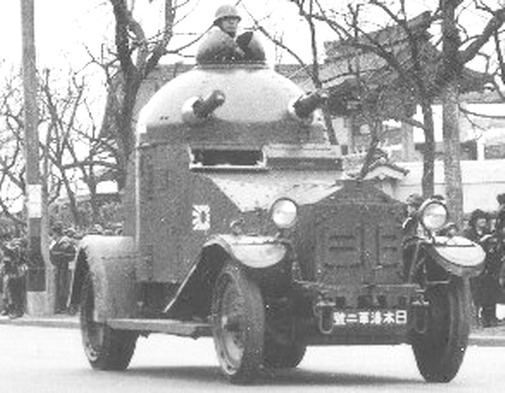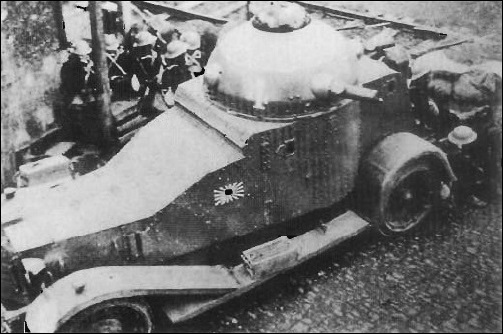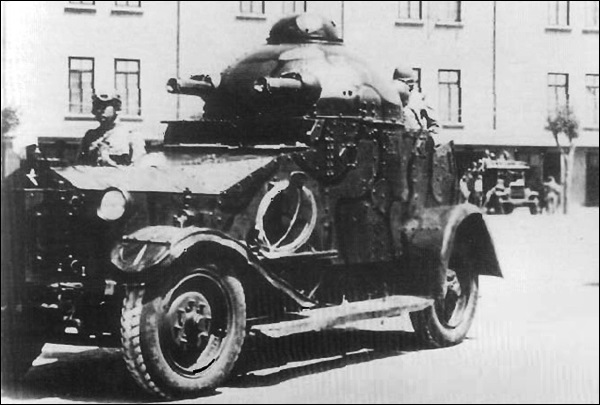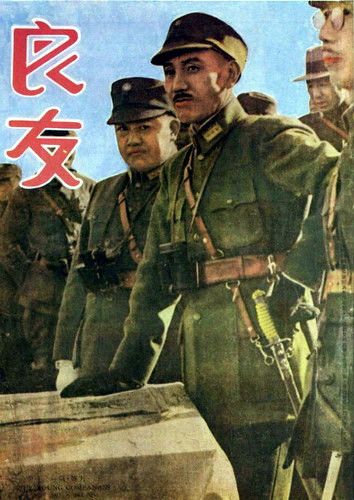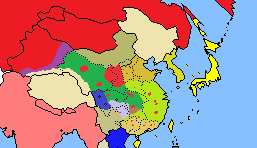Chapter 30: From the Winter War to the Skandinavian War, or Operation: Kaiserwetter
Chapter 30: From the Winter War to the Skandinavian War, or Operation: Kaiserwetter
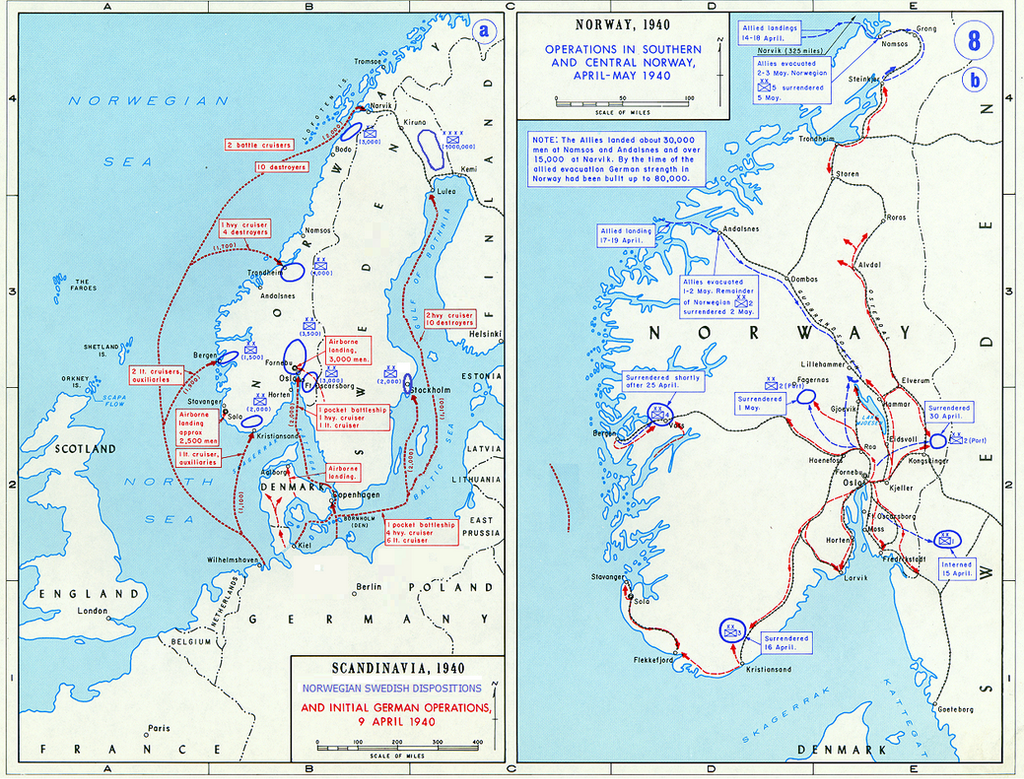
During the early stages of the next Great War, the British and French Allies made a series of proposals to send troops to assist Finland in the Winter War against the Soviet Union which started on 30 November 1939. The plans involved the transit of British and French troops and equipment through neutral Norway and Sweden. The initial plans were abandoned due to Norway and Sweden declining transit through their land, fearing their countries would be drawn into the war. The Winter War started in November 1939. In February 1940, a Soviet offensive broke through the Mannerheim Line on the Karelian Isthmus, exhausting Finnish defenses and forcing the country's government to accept peace negotiations on Soviet terms. At the news that Finland might be forced to cede its sovereignty to the USSR, public opinion in France and Britain, already favorable to Finland, swung in favor of military intervention. When rumors of an armistice reached governments in Paris and London, both decided to offer military support.
Franco-British support was offered on the condition their armed forces be given free passage through neutral Norway and Sweden instead of taking the difficult and Soviet-occupied passage from Patsamo. The first intervention plan, approved on 4–5 February 1940 by the Allied Hight Command, consisted of 100,000 British and 35,000 French troops that were to disembark at the Norwegian port of Narvik and support Finland via Sweden while securing supply routes along the way. Plans were made to launch the operation on 20 March under the condition of a formal request for assistance from the Finnish government (this was done to avoid German charges that the Franco-British forces constituted an invading army). On 2 March, transit rights were officially requested from the governments of Norway and Sweden. It was hoped that Allied intervention would eventually bring the neutral Nordic countries, Norway and Sweden, to the Allied side by strengthening their positions against Germany—although Hitler had by December declared to the Swedish government that Franco-British troops on Swedish soil would immediately provoke a German invasion.
The Franco-British plan, as initially designed, proposed a defense of all of Scandinavia north of a line Stockholm-Gothenburg or Stockholm–Oslo, i.e. the British concept of the Lake Line following the lakes of Mälaren, Hjälmeren and Vänern, which would provide a good natural defense some 1,700–1,900 kilometres (1,000–1,200 miles) south of Narvik. The planned frontier not only involved Sweden's two largest cities but could result in large amounts of Swedish territory being either occupied by a foreign army or becoming a war zone. The plan was revised to include only the northern half of Sweden and the narrow adjacent Norwegian coast. But the Norwegian government denied transit rights to the proposed Franco-British expedition.
The Swedish government, headed by Prime Minister Per Albion Hansson, declined to allow transit of armed troops through Swedish territory, in spite of the fact that Sweden had not declared itself neutral in the Winter War. The Swedish government argued that, since it had declared a policy of neutrality in the war between France, Britain and Germany, the granting of transit rights by Sweden to a Franco-British corps, even though it would not be used against Germany, was still an illegal departure from international laws on neutrality. The Swedish also denied German chancellor Hitler to send reinforcements towards Finland, forcing Germany to start Operation: Kaiserwetter.
This strict interpretation appears to have been a pretext to avoid angering the Soviet and Nazi German governments. Another interpretation was to deny the allies an opportunity to fight Germany far from England or France, destroying the Swedish infrastructure in the process. The Swedish Cabinet also decided to reject repeated Finnish pleas for regular Swedish troops to be deployed in Finland and the Swedes also made it clear that their present support in arms and munitions, could not be maintained for much longer. Diplomatically, Finland was squeezed between Allied hopes for a prolonged war and Swedish and Norwegian fears that the Allies and Germans might soon be fighting each other on Swedish and Norwegian soil. Norway and Sweden also feared an influx of Finnish refugees if Finland lost to the Soviets.The Swedish government also denied the German demands for transit rights across Sweden for German troops on their way to Finland, in order to join the German attack on the Soviet Union. The plan was to let a total of 2,140,000 Axis Central Powers soldiers and more than 100,000 German military railway carriages to crossed neutral Swedish territory during the next years to support Finland and build up the norther front against the Soviet Union. The whole securing of Scandinavia and a full support against the Soviet Union was backed by both Emperor Wilhelm II and Chancellor Hitler since both were against the Communist menace in Russia. The first wanted to reinstall the monarchy in Russia as his main goal and recreate the eastern borders from the Treaty of Brest-Litovsk , the later had his own ideological goals and ideas for the east after the war against Soviet Russia had ended.
While Germany and Sweden pressured Finland to accept peace on unfavorable conditions, Britain and France had the opposite objective. Different plans and figures were presented for the Finns. France and Britain promised to send 20,000 men, who were to arrive by the end of February. By the end of that month, Finland's Commander-in-Chief, Field Marshal Mannerheim, was pessimistic about the military situation and on 29 February the government decided to start peace negotiations. That same day, the Soviets commenced an attack against Viipuri. When France and Britain realized that Finland was considering a peace treaty, they gave a new offer of 50,000 troops, if Finland asked for help before 12 March.

Operation Kaiserwetter (German: was the code name for Germany's assault from their northern coast and Denmark towards Norway and Sweden during what would become the next Great War and the opening operation of the Scandinavian Campaign. The name comes from the German Emperor Wilhelm II for his holidays in Sweden before the first great War. In the early morning of 6 Januar 1940, Germany invaded Sweden and Norway from Denmark and it's northern coast, ostensibly as a preventive maneuver against a planned, and openly discussed, Franco-British occupation of Norway and the Soviet attack to annex Finland. After the invasions, envoys of the Germans informed the governments of Norway and Sweden that the Imperial German Army had come to protect the countries' neutrality against Franco-British aggression. Significant differences in geography, location and climate between the two countries made the actual military operations very dissimilar.
Starting in the spring of 1939, the British Admiralty began to view Scandinavia as a potential theatre of war in a future conflict with Germany or the Soviet Union. The British government was reluctant to engage in another land conflict on the continent that they believed would be a repetition of the first Great War. So they began considering a blockade strategy in an attempt to weaken Germans or Soviets indirectly. German industry was heavily dependent on the import of iron ore from the northern Swedish mining district, and much of this ore was shipped through the northern Norwegian port of Narvik during the winter months. Control of the Norwegian coast would also serve to tighten a blockade against Germany.
In October 1939, the chief of the German High See Fleet —Grand Admiral Erich Raeder—discussed with Wilhelm II and Adolf Hitler the danger posed by the risk of having potential British bases in Norway and the possibility of Germany seizing these bases before the United Kingdom could. The navy argued that possession of Norway would allow control of the nearby seas and serve as a staging base for future operations against the Soviet Union and maybe even the United Kingdom later. But at this time, the other branches of the Imperial German forces were not interested, and Hitler had just issued a directive stating that the main help for Finnland could be drastically shortened by the Swedish support lines.
Toward the end of November, Winston Churchill—as a new member of the British War Cabinet —proposed the mining of Norwegian waters in Operation Wilfried. This would force the ore transports to travel through the open waters of the North Sea, where the Royal Navy could intercept them. Churchill assumed that Wilfred would provoke a German response in Norway. When that occurred, the Allies would implement Plan R 4 and occupy Norway. Though later implemented, Operation Wilfred was initially rejected by Neville Chamberlain and Lord Hallifax, due to fear of an adverse reaction among neutral nations such as the United States. After the start of the Winter War between the Soviet Union and Finland in November had changed the diplomatic situation, Churchill again proposed his mining scheme, but once more was denied.
In December, the United Kingdom and France began serious planning for sending aid to Finland. Their plan called for a force to land at Narvik in northern Norway, the main port for Swedish iron ore exports, and to take control of the Malmbanan railway line from Narvik to Lulea in Sweden on the shore of the Gulf of Bothnia. Conveniently, this plan also would allow the Allied forces to occupy the Swedish iron ore mining district. The plan received the support of both Chamberlain and Halifax. They were counting on the cooperation of Norway, which would alleviate some of the legal issues, but stern warnings issued to both Norway and Sweden resulted in strongly negative reactions in both countries. Planning for the expedition continued and preparations were maid for a military intervention if needed.
Following a meeting with Vidkun Quisling from Norway on 14 December, Chancellor Hitler turned his attention to Scandinavia. Convinced of the threat posed by the Allies to the iron ore supply, Hitler ordered the Oberkommando (Armed Forces High Command; OKW) to begin preliminary planning for an invasion of Norway. The preliminary plan was named Studie Nord and only called for one army division.
Between 14 and 19 January, the Hight Sea Fleet developed an expanded version of this plan. They decided upon two key factors: that surprise was essential to reduce the threat of Norwegian resistance (and British intervention); the second to use faster German warships, rather than comparatively slow merchant ships, as troop transports. This would allow all targets to be occupied simultaneously, impossible if transport ships, which only travelled at slow speeds, were used. This new plan called for a full army corps, including a mountain division, an airborne division a motorized rifle brigade, and two infantry divisions. The target objectives of this force were the Norwegian and Swedish capital Oslo and nearby population centres, Bergen, Narvik, Tromso, Trondheim, Kristiansand, Stavanger, Stockholm and Luleo. The plan also called for the rapid capture of the kings of Norway and Sweden in the hopes that would trigger a rapid surrender. On 21 February 1940, command of the operation was given to General Nikolaus von Falkenhorst. He had fought in Finland during the First World War and was familiar with Arctic warfare. But he was only to have command of the ground forces, despite Hitler's desire to have a unified command.
The final plan was code-named Operation Kaiserwetter on 27 January 1940. The ground forces would be the XXI Army Corps, including the 3rd Mountain Division and five infantry divisions, none of the latter having yet been tested in battle. The initial echelon would consist of three divisions for the assault, with the remainder to follow in the next wave. Three companies of paratroopers would be used to seize airfields. The decision to also send the 2nd and 3rd Mountain Division was made later. The plan to include U-boat operations against the Norwegian and Swedish navies to aid the invasion operation. Every available submarine —including some training boats— were used as part of Operation Hartmut in support of Weserübung. Initially, the plan was to invade Norway and Sweden to force them onto the German demants, as well as to gain control of Danish airfields by diplomatic means. The invasion of Norway was also meant to capture fighter bases and sites for air-warning stations for the German air force.
On 12 March, the United Kingdom decided to send an expectationary force to Norway to help Finland during the Winter War. The expeditionary force began boarding on 13 March, and started. But at the same time the British cabinet voted to proceed with the mining operation in Norwegian waters, followed by troop landings. The first German ships set sail for the invasion on 3 April. Two days later, the long-planned Operation Wilfred was put into action, and the Royal Navy detachment—led by the battlecruiser HMS Renown left Scapa Flow in order to mine Norwegian waters. The mine fields were laid in the Vestfjorden in the early morning of 8 April. Operation Wilfred was over, but later that day, the destroyer HMS Glowworm —detached on 7 April to search for a man lost overboard—was lost in action to the German heavy cruiser Admiral Hipper and two destroyers belonging to the German invasion fleet. On 9 April, the German invasion was under way and the execution of Plan R 4 was promptly started.
The operation's military headquarters was Hotel Esplanade in Hamburg, where orders were given to, among others, the air units involved in the invasion. Norway was important to Germany for two primary reasons: as a base for naval units, including U-boats, to harass Allied shipping in the North Atlantic, and to secure shipments of iron-ore from Sweden through the port of Narvik. The long northern coastline was an excellent place to launch U-boat operations into the North Atlantic in order to attack British commerce. Germany was dependent on iron ore from Sweden and was worried, with justification, that the Allies would attempt to disrupt those shipments, 90% of which originated from Narvik. The invasion of Norway and Sweden was given to the XXI Army Corps under General Nikolaus von Falkenhorst and consisted of the following main units:
Because of the Anti-Soviet tension in their own nations and parliaments neither Great Britain nor France declared officially war on Germany after the Skandinavian War (that was a proxy war between them and Germany), but both countries as well as the Benelux states and the Baltic states quickly mobilized their forces and warned Germany of any form of direct aggression against Western Europe. At the same time the new puppet governments in Skandinavia had to fight parts of the northern Norwegian and Swedish Army that refused to surrender and became resistance fighters in the mountainous scandinavian terrain against the German collaborationist regimes as they called the pro-german puppet government. Sadly for the Germans most parts of the Norwegian trade ships esaped to England, but they seized most of the Swedisch merchant fleet for theis on supplies and trade with the skandinavian states.

During the early stages of the next Great War, the British and French Allies made a series of proposals to send troops to assist Finland in the Winter War against the Soviet Union which started on 30 November 1939. The plans involved the transit of British and French troops and equipment through neutral Norway and Sweden. The initial plans were abandoned due to Norway and Sweden declining transit through their land, fearing their countries would be drawn into the war. The Winter War started in November 1939. In February 1940, a Soviet offensive broke through the Mannerheim Line on the Karelian Isthmus, exhausting Finnish defenses and forcing the country's government to accept peace negotiations on Soviet terms. At the news that Finland might be forced to cede its sovereignty to the USSR, public opinion in France and Britain, already favorable to Finland, swung in favor of military intervention. When rumors of an armistice reached governments in Paris and London, both decided to offer military support.
Franco-British support was offered on the condition their armed forces be given free passage through neutral Norway and Sweden instead of taking the difficult and Soviet-occupied passage from Patsamo. The first intervention plan, approved on 4–5 February 1940 by the Allied Hight Command, consisted of 100,000 British and 35,000 French troops that were to disembark at the Norwegian port of Narvik and support Finland via Sweden while securing supply routes along the way. Plans were made to launch the operation on 20 March under the condition of a formal request for assistance from the Finnish government (this was done to avoid German charges that the Franco-British forces constituted an invading army). On 2 March, transit rights were officially requested from the governments of Norway and Sweden. It was hoped that Allied intervention would eventually bring the neutral Nordic countries, Norway and Sweden, to the Allied side by strengthening their positions against Germany—although Hitler had by December declared to the Swedish government that Franco-British troops on Swedish soil would immediately provoke a German invasion.
The Franco-British plan, as initially designed, proposed a defense of all of Scandinavia north of a line Stockholm-Gothenburg or Stockholm–Oslo, i.e. the British concept of the Lake Line following the lakes of Mälaren, Hjälmeren and Vänern, which would provide a good natural defense some 1,700–1,900 kilometres (1,000–1,200 miles) south of Narvik. The planned frontier not only involved Sweden's two largest cities but could result in large amounts of Swedish territory being either occupied by a foreign army or becoming a war zone. The plan was revised to include only the northern half of Sweden and the narrow adjacent Norwegian coast. But the Norwegian government denied transit rights to the proposed Franco-British expedition.
The Swedish government, headed by Prime Minister Per Albion Hansson, declined to allow transit of armed troops through Swedish territory, in spite of the fact that Sweden had not declared itself neutral in the Winter War. The Swedish government argued that, since it had declared a policy of neutrality in the war between France, Britain and Germany, the granting of transit rights by Sweden to a Franco-British corps, even though it would not be used against Germany, was still an illegal departure from international laws on neutrality. The Swedish also denied German chancellor Hitler to send reinforcements towards Finland, forcing Germany to start Operation: Kaiserwetter.
This strict interpretation appears to have been a pretext to avoid angering the Soviet and Nazi German governments. Another interpretation was to deny the allies an opportunity to fight Germany far from England or France, destroying the Swedish infrastructure in the process. The Swedish Cabinet also decided to reject repeated Finnish pleas for regular Swedish troops to be deployed in Finland and the Swedes also made it clear that their present support in arms and munitions, could not be maintained for much longer. Diplomatically, Finland was squeezed between Allied hopes for a prolonged war and Swedish and Norwegian fears that the Allies and Germans might soon be fighting each other on Swedish and Norwegian soil. Norway and Sweden also feared an influx of Finnish refugees if Finland lost to the Soviets.The Swedish government also denied the German demands for transit rights across Sweden for German troops on their way to Finland, in order to join the German attack on the Soviet Union. The plan was to let a total of 2,140,000 Axis Central Powers soldiers and more than 100,000 German military railway carriages to crossed neutral Swedish territory during the next years to support Finland and build up the norther front against the Soviet Union. The whole securing of Scandinavia and a full support against the Soviet Union was backed by both Emperor Wilhelm II and Chancellor Hitler since both were against the Communist menace in Russia. The first wanted to reinstall the monarchy in Russia as his main goal and recreate the eastern borders from the Treaty of Brest-Litovsk , the later had his own ideological goals and ideas for the east after the war against Soviet Russia had ended.
While Germany and Sweden pressured Finland to accept peace on unfavorable conditions, Britain and France had the opposite objective. Different plans and figures were presented for the Finns. France and Britain promised to send 20,000 men, who were to arrive by the end of February. By the end of that month, Finland's Commander-in-Chief, Field Marshal Mannerheim, was pessimistic about the military situation and on 29 February the government decided to start peace negotiations. That same day, the Soviets commenced an attack against Viipuri. When France and Britain realized that Finland was considering a peace treaty, they gave a new offer of 50,000 troops, if Finland asked for help before 12 March.

Operation Kaiserwetter (German: was the code name for Germany's assault from their northern coast and Denmark towards Norway and Sweden during what would become the next Great War and the opening operation of the Scandinavian Campaign. The name comes from the German Emperor Wilhelm II for his holidays in Sweden before the first great War. In the early morning of 6 Januar 1940, Germany invaded Sweden and Norway from Denmark and it's northern coast, ostensibly as a preventive maneuver against a planned, and openly discussed, Franco-British occupation of Norway and the Soviet attack to annex Finland. After the invasions, envoys of the Germans informed the governments of Norway and Sweden that the Imperial German Army had come to protect the countries' neutrality against Franco-British aggression. Significant differences in geography, location and climate between the two countries made the actual military operations very dissimilar.
Starting in the spring of 1939, the British Admiralty began to view Scandinavia as a potential theatre of war in a future conflict with Germany or the Soviet Union. The British government was reluctant to engage in another land conflict on the continent that they believed would be a repetition of the first Great War. So they began considering a blockade strategy in an attempt to weaken Germans or Soviets indirectly. German industry was heavily dependent on the import of iron ore from the northern Swedish mining district, and much of this ore was shipped through the northern Norwegian port of Narvik during the winter months. Control of the Norwegian coast would also serve to tighten a blockade against Germany.
In October 1939, the chief of the German High See Fleet —Grand Admiral Erich Raeder—discussed with Wilhelm II and Adolf Hitler the danger posed by the risk of having potential British bases in Norway and the possibility of Germany seizing these bases before the United Kingdom could. The navy argued that possession of Norway would allow control of the nearby seas and serve as a staging base for future operations against the Soviet Union and maybe even the United Kingdom later. But at this time, the other branches of the Imperial German forces were not interested, and Hitler had just issued a directive stating that the main help for Finnland could be drastically shortened by the Swedish support lines.
Toward the end of November, Winston Churchill—as a new member of the British War Cabinet —proposed the mining of Norwegian waters in Operation Wilfried. This would force the ore transports to travel through the open waters of the North Sea, where the Royal Navy could intercept them. Churchill assumed that Wilfred would provoke a German response in Norway. When that occurred, the Allies would implement Plan R 4 and occupy Norway. Though later implemented, Operation Wilfred was initially rejected by Neville Chamberlain and Lord Hallifax, due to fear of an adverse reaction among neutral nations such as the United States. After the start of the Winter War between the Soviet Union and Finland in November had changed the diplomatic situation, Churchill again proposed his mining scheme, but once more was denied.
In December, the United Kingdom and France began serious planning for sending aid to Finland. Their plan called for a force to land at Narvik in northern Norway, the main port for Swedish iron ore exports, and to take control of the Malmbanan railway line from Narvik to Lulea in Sweden on the shore of the Gulf of Bothnia. Conveniently, this plan also would allow the Allied forces to occupy the Swedish iron ore mining district. The plan received the support of both Chamberlain and Halifax. They were counting on the cooperation of Norway, which would alleviate some of the legal issues, but stern warnings issued to both Norway and Sweden resulted in strongly negative reactions in both countries. Planning for the expedition continued and preparations were maid for a military intervention if needed.
Following a meeting with Vidkun Quisling from Norway on 14 December, Chancellor Hitler turned his attention to Scandinavia. Convinced of the threat posed by the Allies to the iron ore supply, Hitler ordered the Oberkommando (Armed Forces High Command; OKW) to begin preliminary planning for an invasion of Norway. The preliminary plan was named Studie Nord and only called for one army division.
Between 14 and 19 January, the Hight Sea Fleet developed an expanded version of this plan. They decided upon two key factors: that surprise was essential to reduce the threat of Norwegian resistance (and British intervention); the second to use faster German warships, rather than comparatively slow merchant ships, as troop transports. This would allow all targets to be occupied simultaneously, impossible if transport ships, which only travelled at slow speeds, were used. This new plan called for a full army corps, including a mountain division, an airborne division a motorized rifle brigade, and two infantry divisions. The target objectives of this force were the Norwegian and Swedish capital Oslo and nearby population centres, Bergen, Narvik, Tromso, Trondheim, Kristiansand, Stavanger, Stockholm and Luleo. The plan also called for the rapid capture of the kings of Norway and Sweden in the hopes that would trigger a rapid surrender. On 21 February 1940, command of the operation was given to General Nikolaus von Falkenhorst. He had fought in Finland during the First World War and was familiar with Arctic warfare. But he was only to have command of the ground forces, despite Hitler's desire to have a unified command.
The final plan was code-named Operation Kaiserwetter on 27 January 1940. The ground forces would be the XXI Army Corps, including the 3rd Mountain Division and five infantry divisions, none of the latter having yet been tested in battle. The initial echelon would consist of three divisions for the assault, with the remainder to follow in the next wave. Three companies of paratroopers would be used to seize airfields. The decision to also send the 2nd and 3rd Mountain Division was made later. The plan to include U-boat operations against the Norwegian and Swedish navies to aid the invasion operation. Every available submarine —including some training boats— were used as part of Operation Hartmut in support of Weserübung. Initially, the plan was to invade Norway and Sweden to force them onto the German demants, as well as to gain control of Danish airfields by diplomatic means. The invasion of Norway was also meant to capture fighter bases and sites for air-warning stations for the German air force.
On 12 March, the United Kingdom decided to send an expectationary force to Norway to help Finland during the Winter War. The expeditionary force began boarding on 13 March, and started. But at the same time the British cabinet voted to proceed with the mining operation in Norwegian waters, followed by troop landings. The first German ships set sail for the invasion on 3 April. Two days later, the long-planned Operation Wilfred was put into action, and the Royal Navy detachment—led by the battlecruiser HMS Renown left Scapa Flow in order to mine Norwegian waters. The mine fields were laid in the Vestfjorden in the early morning of 8 April. Operation Wilfred was over, but later that day, the destroyer HMS Glowworm —detached on 7 April to search for a man lost overboard—was lost in action to the German heavy cruiser Admiral Hipper and two destroyers belonging to the German invasion fleet. On 9 April, the German invasion was under way and the execution of Plan R 4 was promptly started.
The operation's military headquarters was Hotel Esplanade in Hamburg, where orders were given to, among others, the air units involved in the invasion. Norway was important to Germany for two primary reasons: as a base for naval units, including U-boats, to harass Allied shipping in the North Atlantic, and to secure shipments of iron-ore from Sweden through the port of Narvik. The long northern coastline was an excellent place to launch U-boat operations into the North Atlantic in order to attack British commerce. Germany was dependent on iron ore from Sweden and was worried, with justification, that the Allies would attempt to disrupt those shipments, 90% of which originated from Narvik. The invasion of Norway and Sweden was given to the XXI Army Corps under General Nikolaus von Falkenhorst and consisted of the following main units:
- 69th Infantry Division
- 82nd Infantry Division
- 125th Infantry Division
- 163rd Infantry Division
- 181st Infantry Division
- 196th Infantry Division
- 214th Infantry Division
- 3rd Mountain Division
- 4th Mountain Division
- Two Battleships as distant cover, plus 10 destroyers with 2,000 mountaineering troops to Narvik.
- One Battleship, 4 destroyers and 6 cruiser with 2,000 troops to Stockholm.
- Two cruisers and ten destroyers with 1,100 troops to Lulea.
- One cruiser and four destroyers with 1,700 troops to Trondheim.
- Two cruisers, one artillery training, a schnellboot, two torpedp boats and five motor torpedo boats with 1,900 troops to Bergen.
- One light cruiser, three torpedo boats, seven motor torpedo boats and a schnellboot with 1,100 troops to Kristiansand and Arendal.
- Two heavy cruiser, one light cruiser and three torpedo boats, eight minesweepers with 2,000 troops.
- Four minesweepers with 150 troops to Egersund.
Because of the Anti-Soviet tension in their own nations and parliaments neither Great Britain nor France declared officially war on Germany after the Skandinavian War (that was a proxy war between them and Germany), but both countries as well as the Benelux states and the Baltic states quickly mobilized their forces and warned Germany of any form of direct aggression against Western Europe. At the same time the new puppet governments in Skandinavia had to fight parts of the northern Norwegian and Swedish Army that refused to surrender and became resistance fighters in the mountainous scandinavian terrain against the German collaborationist regimes as they called the pro-german puppet government. Sadly for the Germans most parts of the Norwegian trade ships esaped to England, but they seized most of the Swedisch merchant fleet for theis on supplies and trade with the skandinavian states.
Last edited:




